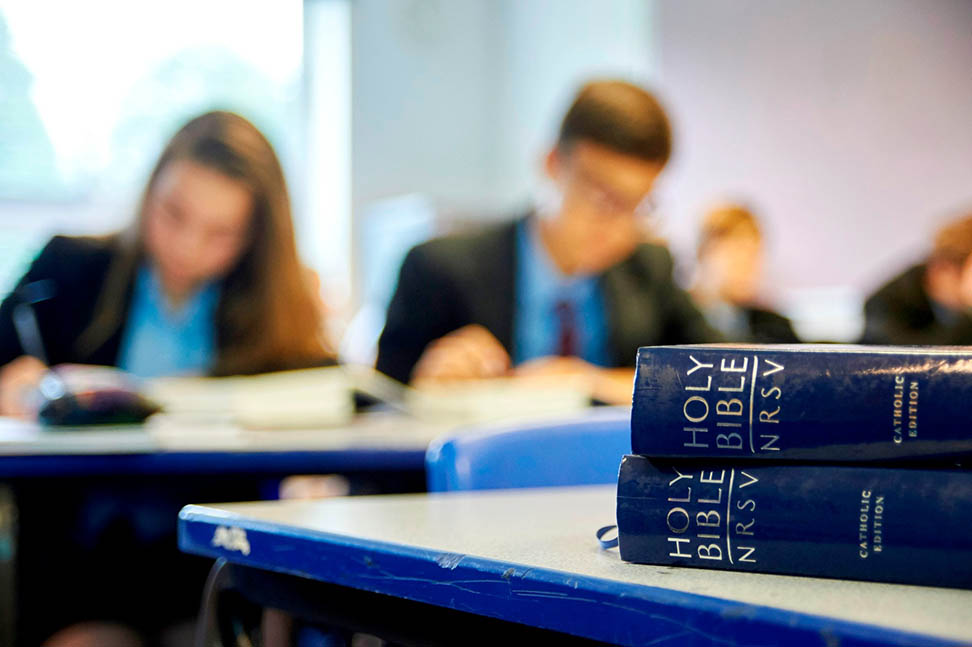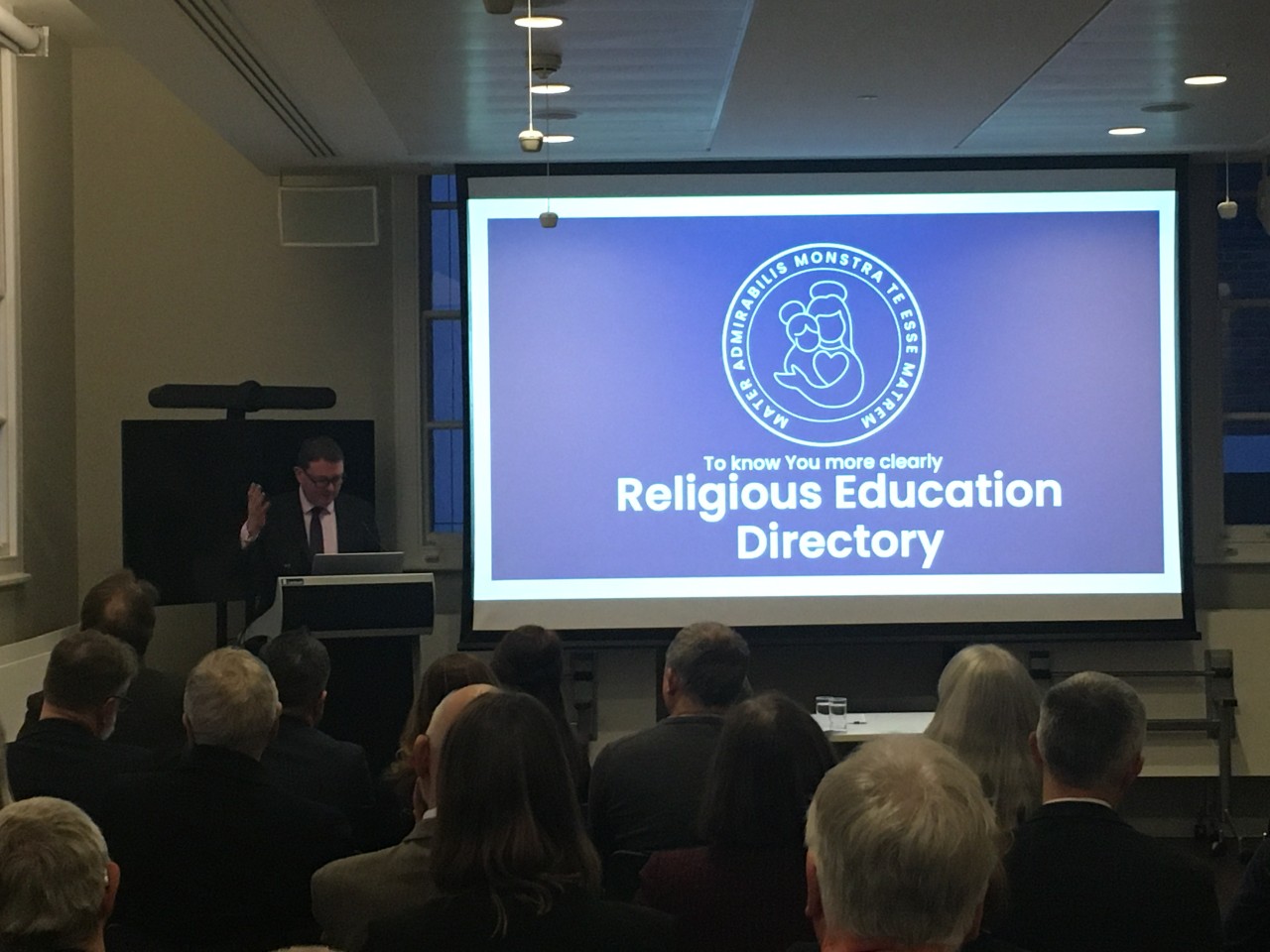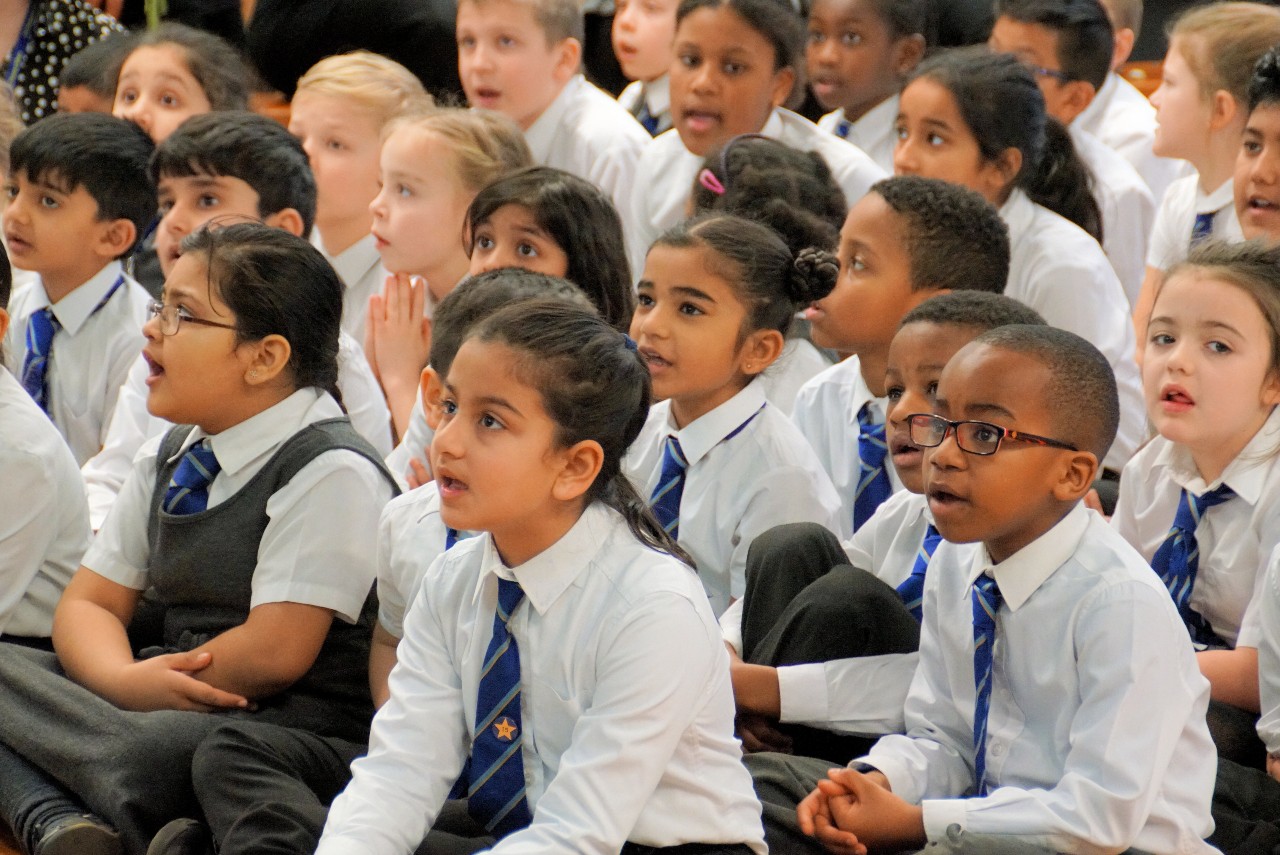Catholic schools come top for GCSE RE exam results - data

Catholic schools’ GCSE Religious Education (RE) exam results are the best in the country, according to the latest data.
Analysis by the Catholic Education Service (CES) of GCSE RE attainment for 2022 has shown that results from Catholic schools have overtaken the national average for the exams.
Last year 75.2% of Catholic school RE GCSE candidates scored a C+ or grade 4, compared to 68.3% nationally.
The results at A Level were more comparable, however, with 66.9% achieving A* or B in Catholic schools, compared to 67.7% in all schools.
Just over a quarter (25.6%) of all pupils who sat GCSE RE exams last year were from Catholic schools, while the proportion was 9.8% at A Level.
Across England and Wales there are 2,175 Catholic schools, colleges and academies, which educate more than 849,000 pupils.
This represents 9% of the state sector in England and 6% in Wales.
Philip Robinson, CES RE Adviser, said: “This is good news, and testament to the hard work of RE teachers and students in Catholic education.
In a society both increasingly secular and religiously pluralistic, RE has an essential role in enabling respectful dialogue on contentious issues like faith and science; refugees and asylum seekers; war and peace.”
The CES has recently launched a new RE Directory, for introduction from 2025 – find out more.
New Religious Education Directory launched by CES
 A new Religious Education (RE) Directory for Catholic schools, colleges and academies in England and Wales has been launched at an event in Westminster.
A new Religious Education (RE) Directory for Catholic schools, colleges and academies in England and Wales has been launched at an event in Westminster.
The directory was introduced at Cathedral View on 25 January by speakers including Dr Margaret Carswell, Senior Lecturer at the Australian Catholic University; Baroness Barran MBE, Parliamentary Under Secretary of State at the Department for Education; the Rt Rev Marcus Stock, Bishop of Leeds and Chairman of the Catholic Education Service (CES); and Paul Barber, CES Director.
Titled To Know You More Clearly the directory sets out the purpose of RE from Early Years Foundation Stage to Year 9 and features a programme of study with a model curriculum, corresponding to the six half-terms of the school year.
The new directory replaces previous editions published in 1996 and 2012, and states that RE is to be taught for at least 10% of curriculum time up to age 16 in Catholic schools and academies, and 5% in sixth forms.
It was drafted by experts including the late Professor Anthony Towey, Head of Theology, Philosophy and History at St Mary’s University; CES Religious Education Adviser Philip Robinson; Senior Policy and Education Adviser Dr Nancy Walbank; and representatives of the Association of Teachers of Catholic Religious Education and the National Board of Religious Inspectors and Advisers.
Based on the constitutions of the Second Vatican Council and rooted in the Catechism of the Catholic Church, the objective of the curriculum is religiously literate and engaged young people, with the knowledge, understanding and skills to reflect spiritually, think ethically and theologically, and recognise the demands of religious commitment in everyday life.
In his preface, Bishop Marcus writes: “As well as seeking to assist parents with the education and religious formation of their children, Catholic schools strive also to be of service to society. Religious education plays its part in this endeavour by enabling all pupils to be confident and secure in their religious faith and knowledgeable and respectful of other religions, and so play a crucial role in building a cohesive society.
“This new edition of the Religious Education Directory strives to embody these inspiring objectives.”
Baroness Barran thanked those present and highlighted “the important role Catholic schools, and schools with a religious character more generally, play in giving children a moral compass, guiding them with values that will be integral not only through their school journey, but beyond that into adulthood, into the workforce and into society.”
Other attendees at the launch included Schools Commissioners from the Catholic dioceses; and representatives from the Church of England Education Office; Board of Deputies of British Jews; Religious Education Council; National Association of Standing Advisory Councils of Religious Education; Culham St Gabriels; Catholic Union; and from the London Jesuit Centre.
While nurturing the faith of Catholic pupils, the curriculum prepares all pupils to play their part as critical citizens in a plural and diverse culture. It develops in them a dialogical attitude, through the content that is presented and through the modelling of respectful dialogue in class, a particularly powerful witness in a context where social media has had such a detrimental impact on the civility of public discourse.
Topics covered include the relationship between faith and science; the problem of evil; nature of human freedom; rights of the unborn; plight of refugees and asylum seekers; war and peace.
There is also a focus on the beauty of Catholicism and its influence on culture through art, music, literature, science, and architecture, equipping young people to engage with the Church beyond intellectual remits, and approach the transcendent.
A series of training workshops on the directory and model curriculum for dioceses are also being planned to take place throughout the year.
England: Catholic school pupils much more diverse than national average – new data
 Pupils in Catholic schools and academies are significantly more diverse than the England average, according to the latest data.
Pupils in Catholic schools and academies are significantly more diverse than the England average, according to the latest data.
Overall, 44% of pupils at Catholic state-funded primaries and secondaries are from an ethnic minority background, compared to 36% nationally.
A total of 11.4% of the 820,994 pupils in England’s 2,090 Catholic schools and academies are either Black or Black British, compared to 5.8% nationally. The percentage of black teachers is also slightly higher, at 2.6%, above a national average of 2.4%.
There are more than three times the proportion of White Irish pupils (1%) than in other state-funded schools and academies (0.3%).
Sixty per cent of pupils in Catholic schools and academies are Catholic, as are just under half of the 47,662 teachers employed. Of the 316,070 non-Catholic pupils, just under half are from other Christian denominations. The largest non-Christian religion represented is Islam, with more than 34,000 Muslim pupils.
Only 0.03% of all pupils, or just 277 of them, in Catholic schools across England are withdrawn from acts of collective worship such as Mass and prayers in assemblies.
The figures come from the annual census of Catholic schools and academies conducted by the Catholic Education Service (CES), which acts on behalf of the Catholic Bishops' Conference and has supported Catholic education since 1847.
Paul Barber, CES Director, said: “Catholic schools have led the way on diversity since the nineteenth century, when many were established to meet the needs of immigrants from Ireland.
“Today they outperform national GCSE averages for English and Maths by five percentage points, with more pupils from the most deprived areas, and from ethnic minorities. Parents and pupils of other faiths and none rightly value this success and the distinctive, all-inclusive ethos of Catholic education.”
Due to a 50% admissions cap for new religious schools, only two new Catholic ones have been built in England since 2010. The cap means a new Catholic school could be put in the position of turning away a pupil for being a Catholic, which is against canon law.
Catholic schools continue to convert into becoming Catholic academies, with a 17% increase in the past year. There are now 814 Catholic academies in England, run by 77 multi-academy trusts.
Altogether, Catholic schools and academies make up 9% of the national total of the state-funded sector, making the Catholic Church the biggest provider of secondary education and the second-largest provider of primary education overall.
Wales: Catholic school pupils much more diverse than national average – new data



 Pupils in Welsh Catholic schools are significantly more diverse than the national average, according to the latest data.
Pupils in Welsh Catholic schools are significantly more diverse than the national average, according to the latest data.
More than 30% of pupils in Wales’s 82 Catholic state-funded primaries and secondaries are from an ethnic minority background, compared to 12.5% in all other schools.
Catholic schools in Wales also have more than four times as many black pupils, with 4.5% of the 28,176 pupils being Black or Black British, compared to 1.1% in all Welsh schools.
There is also more than twice the proportion of pupils from an Asian or Asian British background (6%), compared to 2.6% in other schools.
Just over half (50.3%) of pupils in the sector are Catholic, as are 43.6% of the 1,644 teachers employed.
A total of 73.4% of pupils in Welsh Catholic schools are Christians, and 80% are from a faith background. Of the 13,992 non-Catholic pupils, 46% of these are from other Christian denominations, 36.8% have no religion, and 5.7% are Muslims.
The figures come from the annual census of Catholic schools conducted by the Catholic Education Service (CES), which acts on behalf of the Catholic Bishops' Conference and has supported Catholic education since 1847.
Angela Keller, CES Wales Adviser, said: “Catholic schools are leading the way on diversity in Wales, with parents and pupils of other faiths and none valuing this as well as our distinctive ethos.
“The Welsh government has made closing the disadvantage gap within education a priority - this too has always been our mission.”
Catholic schools make up 6% of the national total of maintained schools across Wales.
Read the report on schools and colleges in Wales – text also available in English.



